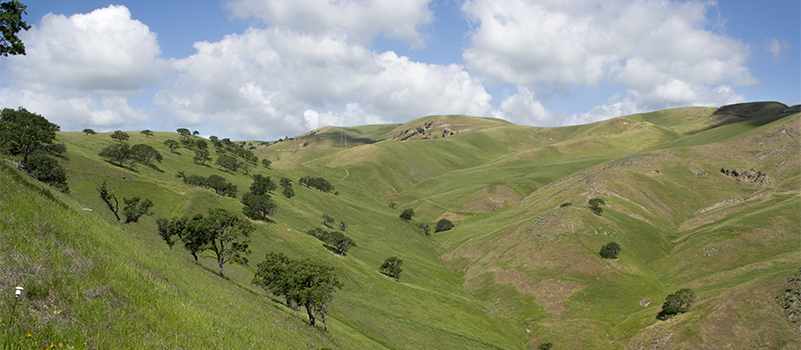Introduction

Some CDFW permits such as Lake or Streambed Alteration (LSA) Agreements and Incidental Take Permits (ITPs) require that Permittees mitigate the impacts of their projects. Mitigation often takes the form of land acquisition and permanent protection. This may be through the purchase of conservation or mitigation bank credits, or Habitat Management Land Acquisition (HMLA).
This page describes the HMLA process and provides tools for Permittees.
CDFW may assume any of the following roles:
- Third-party beneficiary in a conservation easement or fee title
This is the most common role. After CDFW approval, a Permittee may grant an easement or transfer the fee title of HM lands to an entity such as a land trust. CDFW is a third-party beneficiary to this agreement.
- Grantee in a conservation easement or fee title
This is less common. If land is going to be granted to CDFW, it must be reviewed and accepted by the Wildlife Conservation Board(opens in new tab).
The HMLA Process (non-banking)
Stage 1 - Property Eligibility
Review the Permittee Checklist of Documents for HMLA Property Review and Protection (PDF)(opens in new tab) (Permittee Checklist). Your CDFW Regional Representative (identified in your permit) may conduct a site visit of the proposed property. They, in coordination with a CDFW Senior Right of Way Agent, will review property-related documents to determine if the property is eligible to meet permit mitigation requirements, including acreage and biological suitability. Your CDFW Regional Representative will notify you of their findings, and if the property is eligible, Stage 2 begins. If the property is not eligible, you will need to propose a different property or alternative form of mitigation.
Stage 2 - Property Acceptance
Your CDFW Regional Representative will request documents identified in Stage 2 of the Permittee Checklist (PDF)(opens in new tab) and will provide an example of a Conservation Easement (CE) unless property is being conveyed in fee. Show any changes to the CE template in a red-line or strikeout format and submit it electronically to your CDFW Regional Representative. The documents will be reviewed by your CDFW Regional Representative, a CDFW Senior Right of Way Agent, and a CDFW Senior Land Surveyor. Any substantive deviations from the example will require review by CDFW's Office of the General Counsel. After review, your CDFW Regional Representative will notify you of CDFW's decision to accept or deny the property. When CDFW accepts the property, move on to Stage 3.
Stage 3 - Property Protection and Closing Documentation
This stage takes place after the property has been accepted as mitigation by CDFW. During this stage, the property is protected by recording documents transferring fee title or a conservation easement and closing the real estate transaction. When CDFW is a third-party beneficiary, you will need to provide your CDFW Regional Representative with a digital copy of the closing package to ensure CDFW has a copy of all closing documentation required for permit compliance.
When CDFW is a conservation easement grantee or is acquiring land in fee title, the Wildlife Conservation Board(opens in new tab) will review the package and the Executive Director of signs a certificate of acceptance. The Wildlife Conservation Board then sends the conservation easement or grant deed to the title company for recording. You or the title company needs to provide your CDFW Regional Representative with a digital copy of the closing package to ensure CDFW has a copy of all closing documentation required for permit compliance.